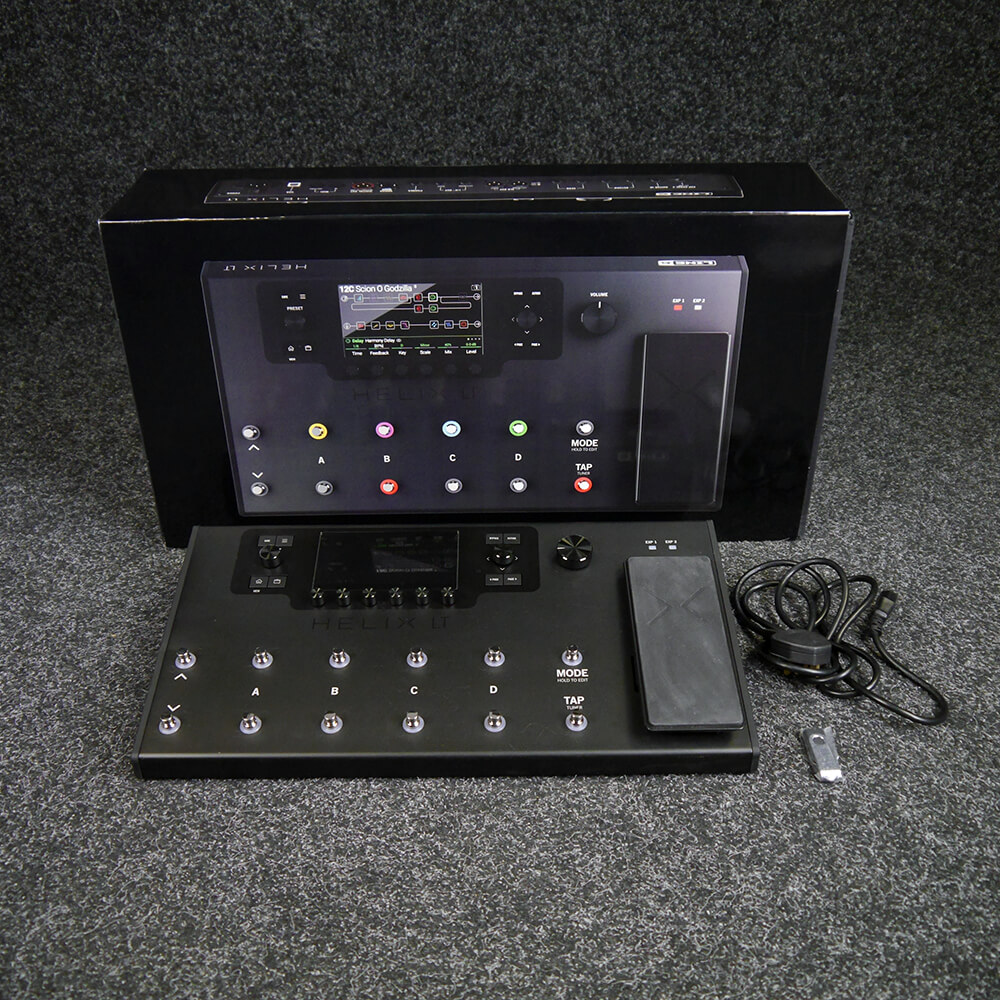
HX Stomp is easy to operate, however, thanks to its simple-but-powerful controls, 320 x 240-pixel color LCD, and capacitive-sensing footswitches with colour-coded LED rings. The same HX Modelling technology that powers the flagship Helix guitar processor enables HX Stomp to run up to six processing blocks simultaneously, making it the most powerful and flexible stompbox-sized multi-effects processor available. Use it as a “super stompbox,” a backup or fly rig, an add-on tone expander when combined with other modellers, an audio interface, or even a complete guitar or bass rig. HX Stomp is a professional-grade multi-effects processor that delivers the sound of Helix amps, cabs, and effects in an ultra-compact pedal. I have not been impressed with the modelling on the helix, it's not on par with current ax fx modelling.
#Line 6 helix fx Patch#
If you’ve never used the Helix command center, programming the Helix to control your amp’s channels is not only easy, it’s amazingly useful I use it to trigger clean and dirty along with effects by stacking controls on a single stomp button, or… automatically choosing clean or dirty when the patch is initiated.Line 6 HX-Stomp Multi Guitar FX Processor Pedal with HELIX Effects The point of going with ax fx over line 6 is sound quality. amp port to the amp’s footswitch port to control the amp’s clean/dirty channels from the Helix.


All other pre and post effects for songs like Living on a Prayer, artists like The Killers, and anything else that really requires some effects blocks other than basic tone fit beautifully into each pre and post chain. Simply put, with 2 separate chains for pre and post going into and out of my amp I get to use the amp’s natural clean and dirty tone (which I love), and I’ll use the amp’s onboard chorus when necessary, too. Most of my leads use the stereo delay set with 1/8 and 1/4 delays running over each other. So I tweak it accordingly from song to song. The compressor is too much on my clean channel, but quite perfect on my dirty channel. Some might night more or less of the noise gate, more or less of the compressor, etc. the Fractal Audio Axe-Fx III, Line 6 Helix and Kemper Profiling Amplifier. I simple tweak each song patch to suit the song. A 5-piece group of background vocalists, a string quartet or a 6-piece horn.

I love snapshots, but I don’t use them for this setup. To some that might seem like overkill, but my guy over at SweetWater agrees with me, it’s a great way to go. To compare the different cab sounds in the Line 6 Helix. I use this for a base patch, and I have a separate patch for each and every song. Like Plug-in Nap, Studio One Mix Engine FX plug-ins from PreSonus also now use less CPU. I use mono for leads, and back to stereo for rhythm. So leads are not using the stereo Double Take effect. When I kick in my leads, the compressor and boost (both Kinky) turn on, the Double Take turns off, and the volume block boosts my post-gain by about 4db. Settings are very fussy, too much of this or that and it can sound like a chorus pedal. This layers the tone a bit, fattening it up.

I use the Double Take at the end of my entire 2-chain setup to separate the signal between the amp’s speakers. Now, to be clear, the Marshall is a stereo cabinet, it has a stereo fx return on it.


 0 kommentar(er)
0 kommentar(er)
